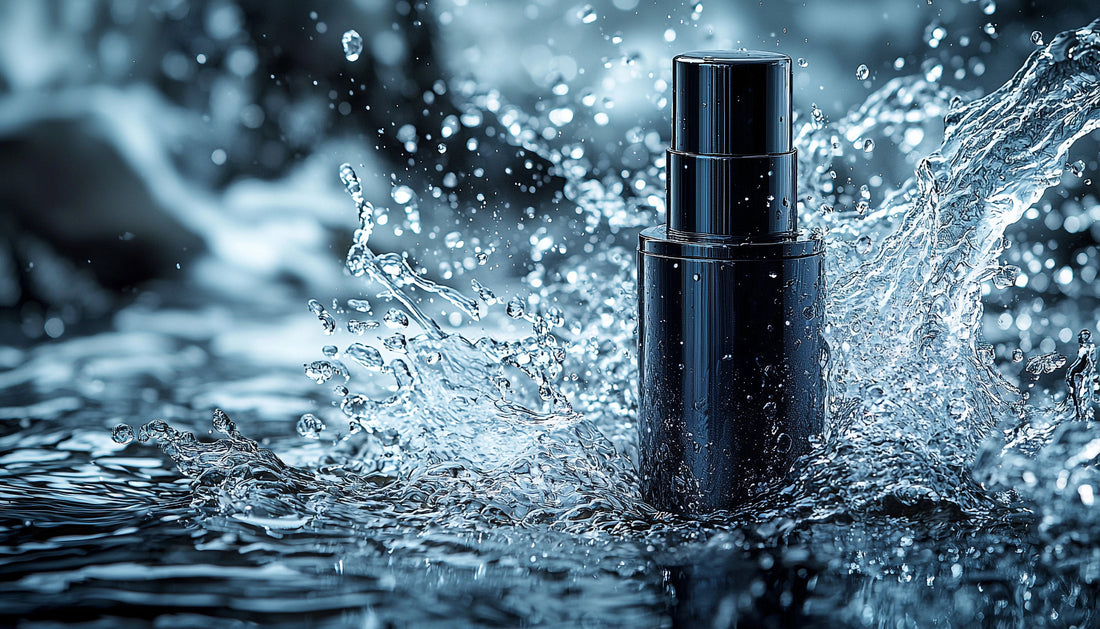
Toners, Essences, Softeners & Rejuvenating Water: Key Differences
Share
The Ultimate Guide to Toners, Essences, and Softeners in Skincare: What’s the Difference and How to Use Them
When it comes to skincare, many of us are constantly on the lookout for the perfect products that deliver glowing, youthful skin. One category of products that often leaves people puzzled is toners, essences, and softeners. While they might seem similar at first glance, each one has distinct benefits and functions within a skincare routine. Understanding the differences between these three products can help you choose the right one for your skin type and concerns.
In this in-depth guide, we’ll explore the differences between toners, essences, and softeners. We’ll look at what each product does, how they work, and how to incorporate them into your skincare routine for maximum benefits. Whether you’re a skincare enthusiast or just beginning your beauty journey, this guide will help you better understand these essential skincare products and how to use them for healthier, radiant skin.
What Are Toners?
Toners have been a staple in skincare routines for decades, and they’ve evolved significantly over time. Traditionally, toners were used as a second step in cleansing to balance the skin’s pH levels after using an alkaline cleanser. These early toners often contained alcohol, which could be drying for the skin, particularly for those with sensitive or dry skin.
Explore Toners, Essence, Softeners, and Rejuvenating Water at AgelessBeauty3000.com
However, modern toners are much more advanced and offer a variety of benefits. Today’s toners are formulated with hydrating, soothing, and skin-refreshing ingredients, making them ideal for all skin types, including dry, oily, and combination skin.
How Toners Work
The primary role of a toner is to balance the skin’s pH and prepare it for the rest of your skincare routine. After cleansing, your skin’s natural pH level may be disrupted, and a toner helps restore it to its optimal level. This helps the skin better absorb the following products in your skincare regimen, such as serums, moisturizers, and treatments.
Toners can also address specific skin concerns such as acne, redness, or dehydration. For example, toners with ingredients like witch hazel or salicylic acid can target acne and blemishes, while those with rose water or aloe vera can help calm irritation and redness. Many toners also contain humectants like glycerin, which draw moisture into the skin, leaving it feeling refreshed and hydrated.
Types of Toners
There are several types of toners available, each designed to address different skin concerns:
-
Hydrating Toners: These toners are typically formulated with ingredients like glycerin, hyaluronic acid, or aloe vera to help hydrate and plump the skin. They’re great for dry, sensitive, or dehydrated skin.
-
Exfoliating Toners: Exfoliating toners often contain alpha-hydroxy acids (AHAs) or beta-hydroxy acids (BHAs) like glycolic acid or salicylic acid. These acids gently exfoliate the skin, removing dead skin cells and helping to clear clogged pores. They are ideal for those with acne-prone or uneven skin tone.
-
Balancing Toners: These toners aim to balance oil production and help keep the skin’s natural oils in check. They typically contain ingredients like witch hazel, tea tree oil, or niacinamide, which help control excess oil and minimize the appearance of pores.
-
Soothing Toners: Soothing toners are formulated with calming ingredients like chamomile, rose water, or calendula, making them ideal for sensitive skin or anyone dealing with redness and irritation.
How to Use Toners
After cleansing your skin, apply toner to a cotton pad or your hands and gently press it into your skin. Be sure to cover your entire face and neck area. Toners can be used both morning and evening to refresh and balance the skin before applying serums, treatments, and moisturizers.
What Are Essences?
Essences are often considered the heart of an Asian skincare routine, especially in Korean and Japanese beauty regimens. Although essences and toners share some similarities, they are distinctly different in both function and formulation.
Essences are lightweight, hydrating liquids packed with active ingredients designed to target specific skin concerns. Unlike toners, which are primarily used to balance the skin’s pH and prepare it for other products, essences deliver a concentrated dose of hydration, nourishment, and skin-enhancing ingredients directly to the skin.
How Essences Work
Essences typically contain a high concentration of active ingredients like antioxidants, vitamins, peptides, and fermented ingredients that support skin regeneration, improve skin texture, and brighten the complexion. These ingredients are absorbed quickly by the skin and work on a deeper level to address issues such as fine lines, hyperpigmentation, dullness, and dryness.
The lightweight consistency of an essence allows it to penetrate deeply into the skin without leaving a greasy or heavy feeling. This makes essences an ideal choice for layering under other skincare products like serums, moisturizers, or oils.
Types of Essences
-
Hydrating Essences: These essences are formulated with humectants like glycerin, hyaluronic acid, or aloe vera to attract and retain moisture, leaving the skin feeling soft, plump, and refreshed.
-
Brightening Essences: Brightening essences typically contain ingredients like vitamin C, niacinamide, or licorice extract to reduce the appearance of dark spots, pigmentation, and uneven skin tone.
-
Anti-Aging Essences: Anti-aging essences are rich in ingredients like peptides, retinol, or fermented extracts, which help stimulate collagen production, smooth fine lines, and improve skin elasticity.
-
Soothing Essences: If you have sensitive or irritated skin, soothing essences with ingredients like chamomile, aloe vera, or calendula can help calm inflammation, redness, and discomfort.
How to Use Essences
Essences are typically applied after cleansing and toning but before applying serums or moisturizers. To use an essence, pour a small amount into your palms or onto a cotton pad and gently pat it onto your skin. Avoid rubbing the product into your face; instead, gently press it into your skin to allow it to absorb.
Essences can be used both in the morning and evening for an added layer of hydration and nourishment.
What Are Softeners?
Softeners are another popular product in Asian skincare routines, particularly in Japanese beauty regimens. While toners and essences focus on balancing the skin and providing targeted treatment, softeners are designed to prepare the skin to fully absorb the next steps in your skincare routine. They act as a bridge between toning and moisturizing and help improve the skin’s texture, leaving it feeling smooth, soft, and ready to absorb the products that follow.
How Softeners Work
Softeners typically contain a blend of moisturizing and conditioning ingredients that hydrate and smooth the skin’s surface. They help to increase the skin’s permeability, allowing subsequent products like serums, oils, and moisturizers to penetrate more deeply. The use of softeners can also enhance the texture of the skin, making it feel velvety and supple.
While softeners are similar to essences in their ability to hydrate and smooth the skin, softeners tend to have a thicker consistency, often resembling a slightly viscous liquid or gel. This consistency allows softeners to deeply moisturize and create a smooth canvas for the rest of your skincare routine.
Types of Softeners
-
Hydrating Softeners: These softeners focus on providing moisture and improving skin texture. They are ideal for dry or rough skin and often contain humectants like hyaluronic acid or glycerin.
-
Exfoliating Softeners: Exfoliating softeners may contain mild exfoliating acids or enzymes to gently remove dead skin cells and promote smoother, more radiant skin.
-
Soothing Softeners: These softeners contain calming ingredients like chamomile or aloe vera, which help to reduce irritation and restore comfort to sensitive skin.
-
Nourishing Softeners: Nourishing softeners may include ingredients like ceramides, fatty acids, and plant oils that help restore the skin’s lipid barrier and provide deep moisture.
How to Use Softeners
Softeners are typically used after cleansing and toning (or after applying an essence, depending on your routine). To use a softener, pour a small amount into your palms and gently press it onto your face, or use a cotton pad to apply it evenly. Allow it to absorb into the skin before moving on to the next steps in your skincare regimen, such as applying serum or moisturizer.
Toners, Essences, and Softeners: Which One Should You Use?
The decision to incorporate a toner, essence, or softener into your skincare routine depends on your skin type, concerns, and desired results. Here’s a breakdown of which product might be right for you:
-
Toners are great for balancing the skin’s pH, refreshing the skin, and addressing specific concerns like acne, redness, or dehydration. They are ideal for anyone looking to prep their skin for further treatment.
-
Essences are perfect for those who want an extra boost of hydration and nourishment. If you’re looking to target specific skin concerns like fine lines, dark spots, or dullness, an essence with active ingredients can provide a concentrated treatment.
-
Softeners are ideal for those who want to enhance their skin’s texture and boost its ability to absorb other skincare products. Softeners are particularly beneficial for dry or rough skin in need of extra moisture and smoothing.
How to Layer Toners, Essences, and Softeners
The key to using these products effectively is understanding how to layer them properly. Here’s a basic guide to layering toners, essences, and softeners in your skincare routine:
- Cleanse your face to remove dirt, oil, and makeup.
- Toner: Apply your toner to balance your skin’s pH and remove any remaining impurities.
- Essence: Pat your essence into the skin for added hydration and targeted treatment.
- Softener: Use a softener to smooth and prepare your skin for the next steps in your routine.
- Serum: Apply your serum, if you use one, to target specific concerns.
- Moisturizer: Seal in all the goodness with your favorite moisturizer.
- Sunscreen: In the morning, finish with sunscreen to protect your skin from harmful UV rays.
Conclusion: The Secret to Perfect Skin? The Right Combination of Toners, Essences, and Softeners
Understanding the differences between toners, essences, and softeners can completely transform your skincare routine. These products each play a unique role in balancing, hydrating, and preparing the skin for further treatment, so incorporating the right combination into your regimen can lead to healthier, more radiant skin.
Whether you choose to use a toner for refreshing and balancing, an essence for targeted hydration and treatment, or a softener for a smooth, absorbent base, each product has its place in a well-rounded skincare routine. By choosing the right products for your skin type and concerns, you can achieve glowing, youthful skin with ease.
Now that you know the ins and outs of toners, essences, and softeners, it’s time to enhance your routine and discover the best products for your skin. Happy skincare!
Explore Toners, Essence, Softeners, and Rejuvenating Water at AgelessBeauty3000.com
